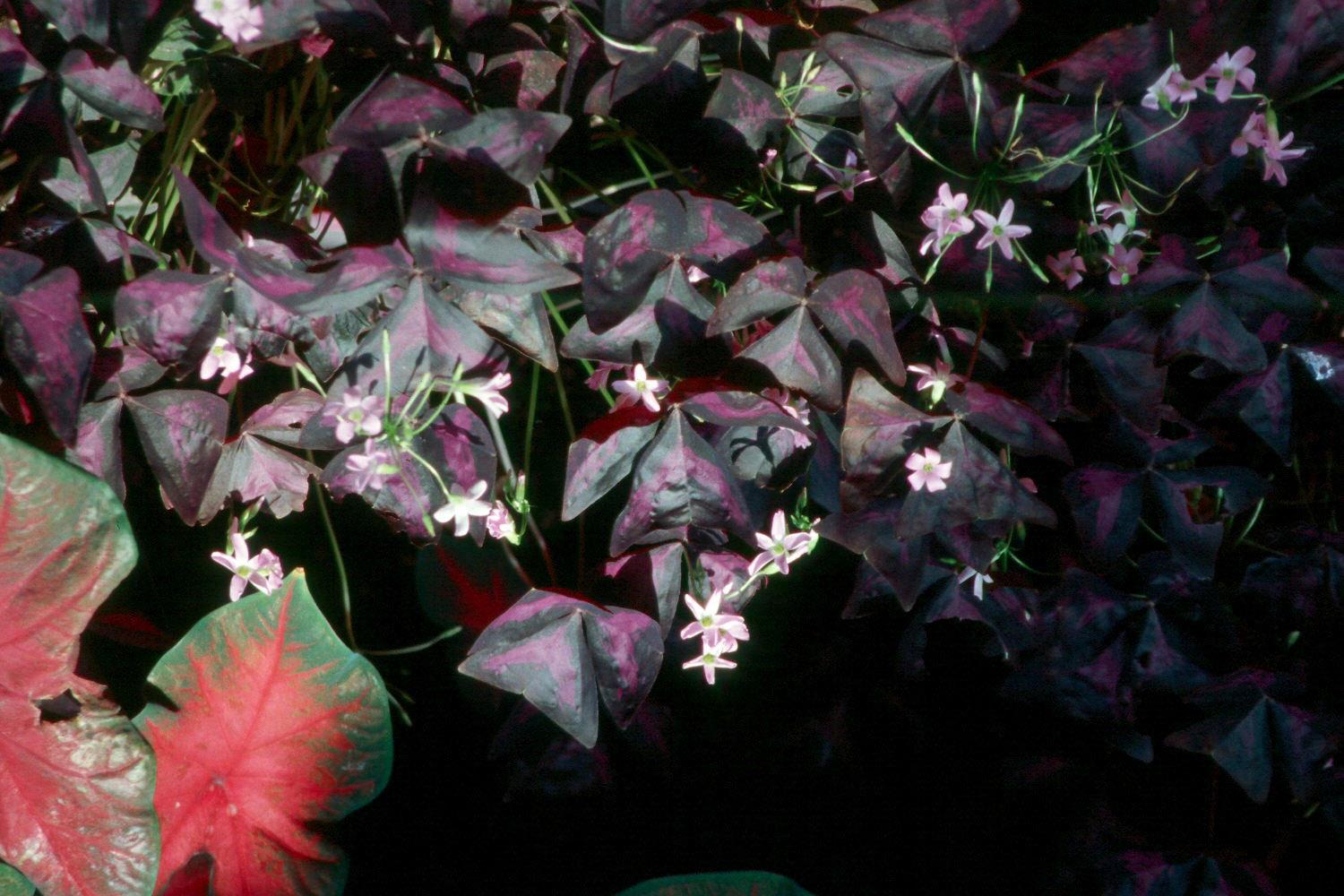Information Possibly Outdated
The information presented on this page was originally released on May 12, 2003. It may not be outdated, but please search our site for more current information. If you plan to quote or reference this information in a publication, please check with the Extension specialist or author before proceeding.
Purple oxalis shines in shade gardens
By Norman Winter
MSU Horticulturist
Central Mississippi Research & Extension Center
Visitors fell in love with a previously loathed plant in a shade garden on the Gardens of Madison County tour.
While some gardeners think of oxalis as a tough plant to kill or eradicate, they also should consider the beauty of the purple oxalis. Purple oxalis has large, triangular leaves of deep purple. Its nearly 1-inch flowers range in color from pink to lilac.
Though the purple oxalis is tough, it is not invasive like the ones you have been trying to kill. The purple oxalis is from South America and is a true garden asset. In fact, you may wish they were a little more aggressive so you could grow hundreds of them quickly.
Purple oxalis is so pretty, you will want to prepare a good home. Amend the soil with 3 to 4 inches of organic matter like compost or humus, and till to a depth of 6 to 8 inches. While you are preparing the bed, incorporate 2 pounds of a slow-release, 12-6-6 fertilizer per 100 square feet of bed space.
Set out plants at the depth they are growing in the container, spacing them 8 to 12 inches apart. The crown should be just above the soil surface. Apply a layer of mulch after planting.
Should the foliage look less than desirable at any time during the growing season, the oxalis can be cut back. New growth will quickly emerge. Feed with a light application of fertilizer one month after transplanting and then every four to six weeks throughout the growing season.
Start feeding established plants in the spring with the emergence of growth and then continue through the summer. In colder areas, apply an added layer of mulch once frost damage has occurred.
The purple oxalis is a wonderful border plant for full- to partial-shade gardens. Georgia trails show it will also grow in full sun. Once planted, the foliage quickly deteriorates in quality and is cut back. The new growth returns able to tolerate the sun.
I still prefer the shade garden for the oxalis and think it is mandatory the closer you are to the coast. They are excellent combined with wood ferns, hostas, cast iron plants, or impatiens in white, lilac or pink. Grow under gingers for an extra-special, lush appearance. They would also look great in front of hydrangeas.
Purple oxalis, known as Oxalis regnelli, is often sold as O. triangularis. Also try the O. siliquosa variety Sunset Velvet, which features chartreuse and coppery maroon leaves with yellow flowers. This one will most likely return on the coast, but it will be treated as an annual in colder areas.
I'll admit that in my younger days, I looked at all oxalis with a negative eye. But thanks to the purple oxalis, I'm beginning to look at the entire group differently. They can really make a shade garden more beautiful.



